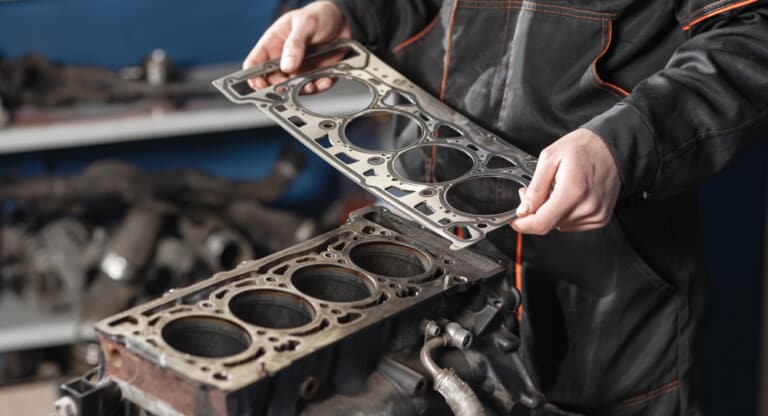
Read Also: Why Is There Oil in My Intake Manifold? Possible Causes of Oil in Coolant On the contrary, when coolant enters an engine’s lubricating system, oil viscosity is effectively reduced, thereby leaving a number of critical components vulnerable to accelerated wear. This can cause an engine’s cooling efficiency to plunge below ideal rates. When oil enters an engine’s cooling system, it tends to stop up various cooling passages, including those found within a vehicle’s radiator. Nonetheless, under certain circumstances, oil can find its way into coolant, and coolant into the oil, as the result of one or more issues. Though these fluids circulate within close proximity to one another at multiple points throughout their path of travel, they should always be sealed from each other, by way of structural means. Ideally, an engine’s oil and coolant should never mix. Oil in Coolant vs Coolant in Oil Coolant in oil The consequences of this type of contamination can be devastating to an engine’s bearing and other critical surfaces. With time, oil/coolant cross-contamination will lead to the plugging of various cooling passages, thereby preventing proper heat-exchanging from taking place.įurthermore, any time oil appears within an engine’s cooling system, the possibility of coolant entering an engine’s lubricating system should not be overlooked. Most prominently, an engine’s capacity to protect itself from overheating will be significantly diminished. There are a number of consequences that can arise if oil finds its way into your engine’s coolant. What Can Happen If Oil Gets In Your Coolant? In the most severe of cases, this mixed substance might also begin to purge from beneath an overflow tank’s cap. As time passes, you might also notice a milky film building within the reservoir itself, often limiting overall visibility. This only grows increasingly evident as contamination becomes more pronounced.Īt first, an engine’s cooling reservoir might begin to appear cloudy in appearance when contaminated with oil. Oil-contaminated coolant often takes on a thick, slimy consistency, and appears gray or brown in color. For this reason, a noticeable change occurs in the state of coolant and oil that have come into contact with one another. Can You Drive if There’s Oil in the Coolant Tank?.What To Do If You Find Oil In Your Coolant Reservoir.#4 – Oil Accidently Filled In Coolant Reservoir.#3 – Compromised Heat Exchanger or Oil Cooler.What Can Happen If Oil Gets In Your Coolant?.
#DT466 OIL IN COOLANT RESERVOIR HOW TO#
See Also: Oil On Spark Plug Threads (Causes and How to Fix)

Read on to learn more about cooling system oil contamination, as well as how to address such issues should they arise in the future. However, this begs the question, “is it time to panic?” This serves as a direct indication that oil has entered an engine’s cooling system, thereby compromising its efficiency. One of the most common signs of fluid cross-contamination occurs when oil appears in an engine’s coolant reservoir or antifreeze overflow tank. Therefore, time is of the essence when attempting to isolate the source of fluid cross-contamination.

If the underlying cause of such a condition is not remedied in short order, overall engine health can suffer. In certain instances, a vehicle’s vital fluids can mix, leading to cause for significant concern. A lack of flow in either system can cause damage in relatively short order. Most notably, the flow of oil provides much-needed lubrication to an engine’s moving parts, while coolant prevents overheating by keeping internal temperatures in check. Today’s engines rely upon the proper flow of fluids to sustain the health and well-being of numerous systems.


 0 kommentar(er)
0 kommentar(er)
